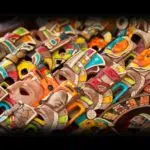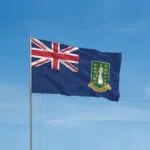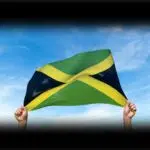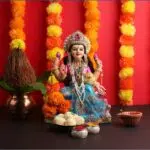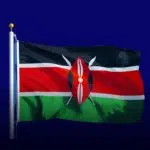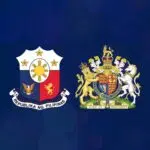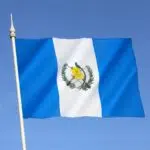Day of the Races is celebrated on the third Monday of October, and this year, it falls on October 20. It’s also called “El día de la Raza y de la Hispanidad,” meaning “Day of the Race.” It commemorates the first contact between Europeans and Native Americans. On this day, Italian navigator Christopher Columbus first set foot in the Americas. It’s a day to highlight the encounter of the two worlds as well as reflect on the richness and racial diversity this brought to the culture.
History of Day of the Races
Colombia is bordered on the north by the Caribbean Sea, northwest by Panama, on the east by Venezuela and Brazil, and on the southwest by Peru and Ecuador. It’s home to the world’s second-largest Spanish-speaking population. It has been home to many indigenous people from as early as around 12000 B.C., such as the Muisca, Tairona, and Quimbaya. The Muisca had an advanced culture whose economy centered on agriculture as well as the trade of cotton cloth, pottery, and gold. Many Spanish explorers such as Christopher Columbus and Alonso de Ojeda made their way to the area around 1499, but would only establish their first settlement in 1510. The settlers conquered the indigenous people, stealing all their gold and jewels by 1538. A new kingdom of Granada was created, with Santa Fe de Bogota as its capital. Nearly 250 years of Spanish rule followed.
Tired of Spanish control, in 1811 the city of Cartagena declared its independence, with Bogota soon following. Spain tried to reclaim its control in 1815 but Venezuelan General Simon Bolivar led Colombian forces to victory over them in 1819. The United Provinces of New Granada, of which Colombia was part, then declared its independence. After the country’s downfall in 1835, Colombia became a separate nation.
The nation has suffered much military and political violence from the 1960s to the 1990s. Since 2005, stability and security have improved significantly, which has led to much progress and economic growth.
Day of the Races timeline
The United Provinces of New Granada declares its independence from Spain, forming what is present-day Colombia.
President of the Ibero-American Union, minister Faustino Rodríguez-San Pedro orchestrates the first Day of the Races celebration.
Mexican author José Vasconcelos states in his book that a new race would be formed through the continuous mixing of races in the Latin world.
The assassination of liberal leader Jorge Eliecer Gaitan sparks a civil war between liberals and conservatives, killing at least 200,000 people.
The left-wing FARC (Revolutionary Armed Forces of Colombia) guerilla organization and the Colombian government sign a peace accord that ends 52 years of civil war and potentially ushers in a new wave of business and tourism opportunities.
Day of the Races FAQs
What is the nickname of Colombia?
Located in the northwestern part of the continent where South America meets Central and North America, Colombia is also called the “gateway to South America.”
What is the race of a Colombian?
The majority of the population — over 86% — are of mixed ancestry, descendants from both Amerindian and whites called ‘mestizos’ or whites. 10.4% are African and over 3.4% are indigenous or native South Americans.
What is the controversy surrounding the Day of the Races?
Many in the indigenous community believe that Columbus was a colonizer, not a discoverer.
Some countries like Valenzuela changed the holiday name to “Día de la Resistencia Indígena” to show the resistance of the indigenous people to the imposition of European culture.
How to Observe Day of the Races
Feast on Colombian food
Colombian food is hearty and flavorful. Get your fill with dishes like Aliaco, Bandeja Paisa, Arepas, Tamales, and Lechona. Finish it off with Chocolate Santafereño for an authentic sweet treat.
Read up on Colombian history
Even before the Spaniards came, there was life and culture in Colombia. How indigenous people like the Muisca sustained themselves make for fascinating reading.
Share on social media
Whether it’s devouring a Colombian dish or attending a parade, post your Day of the Races activities online. There’s no better way to raise awareness about other cultural events than social media.
5 Fascinating Food Facts From Colombia
Children can drink coffee
Coffee con Leche, or coffee with milk, is a normal after-meal drink for kids.
Soup with animal stomach lining is popular
Mondongo is made with carrots, coriander, onions, peas, and cow or pig tripe.
Hot chocolate and cheese as a drink
Hot chocolate is boiled and pieces of cheese are dropped into the cup.
Beer goes with their national sport
Tejo halls charge by the crate of beer consumed, not by the hour or game.
Unripe mangoes are a delicacy
It’s served with lime, salt, and pepper as a favorite street snack.
Why Day of the Races is Important
It gives Colombians a sense of pride
Native South Americans already had their own culture when the Spanish and Africans came. To be recognized before and after the explorers came gives Colombians something to be proud of.
It encourages discussion
There are two sides to every story. As the conversation on discoverers versus colonizers continues, so does the visibility and relevance of the holiday.
It reminds Colombians of their rich heritage
Colombian culture was further enriched by foreign influences as seen in their ethnic make-up, religion, and society. That only makes Colombia – and Colombians – more interesting.
Day of the Races dates
| Year | Date | Day |
|---|---|---|
| 2024 | October 21 | Monday |
| 2025 | October 20 | Monday |
| 2026 | October 19 | Monday |






